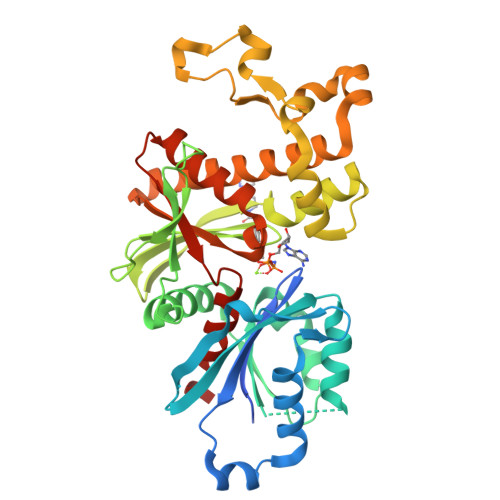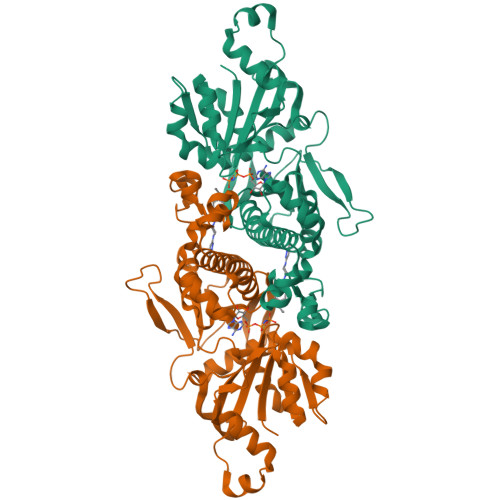Pantothenate kinase activation relieves coenzyme A sequestration and improves mitochondrial function in mice with propionic acidemia.
Subramanian, C., Frank, M.W., Tangallapally, R., Yun, M.K., Edwards, A., White, S.W., Lee, R.E., Rock, C.O., Jackowski, S.(2021) Sci Transl Med 13: eabf5965-eabf5965
- PubMed: 34524863
- DOI: https://doi.org/10.1126/scitranslmed.abf5965
- Primary Citation of Related Structures:
6PE6 - PubMed Abstract:
Propionic acidemia (PA) is a rare autosomal-recessive metabolic disease that arises from mutations in propionyl-CoA (C3-CoA) carboxylase. Reduced enzyme activity slows C3-CoA metabolism, leading to an elevated plasma C3:C2-carnitine ratio, the hallmark biomarker of PA. The metabolic imbalances experienced in PA are however poorly defined. Here, we used a hypomorphic PA mouse model to demonstrate that C3-CoA accumulation in liver reduced non-esterified CoA (CoASH) and acetyl-CoA (C2-CoA). Tricarboxylic acid (TCA) cycle intermediates that are normally metabolized instead accumulated in urine, providing direct evidence for compromised mitochondrial function in PA. Pantothenate kinase (PanK) is known to catalyze the rate-controlling step in CoA biosynthesis, and its inhibition by C3-CoA prevents an increase in CoA biosynthesis to alleviate CoASH sequestration. PZ-3022 is an allosteric PanK activator that counteracts C3-CoA inhibition. PZ-3022 therapy increased hepatic CoASH and C2-CoA and decreased C3-CoA in the PA mouse model, leading to improved intracellular C3:C2-CoA and plasma C3:C2-carnitine ratios. Elevated urinary malate is a major component of the metabolic signature for TCA cycle dysfunction in the PA mouse, and the 80% reduction in urine malate by PZ-3022 therapy indicates the restoration of mitochondrial function. Thus, CoASH sequestration in PA leads to reduced TCA cycle activity that is relieved by PZ-3022, providing preclinical proof of concept for PanK activators as a therapy to attenuate the underlying mitochondrial defect in PA.
Organizational Affiliation:
Department of Infectious Diseases, St. Jude Children's Research Hospital, Memphis, TN 38105, USA.



















